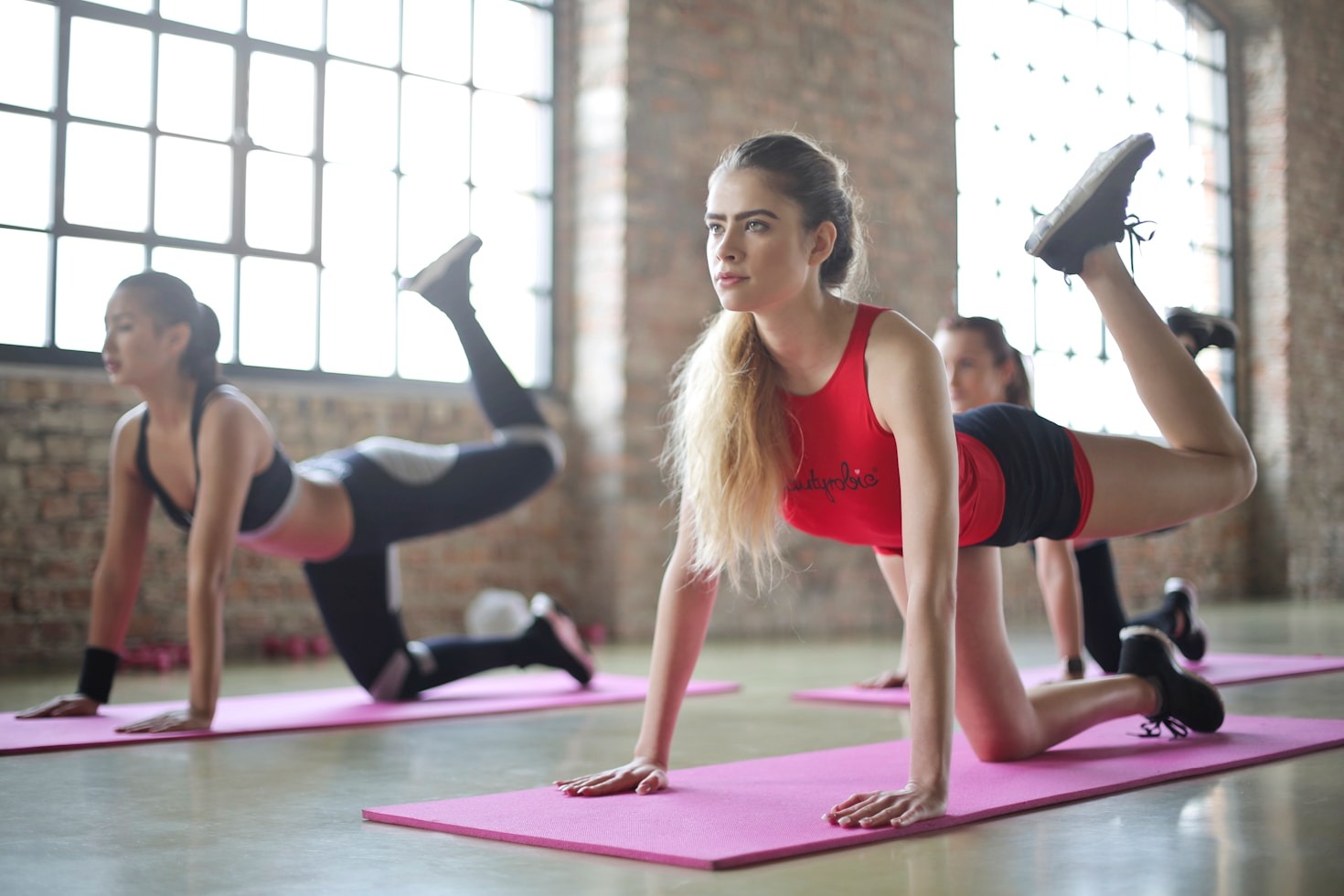Yoga:-
Yoga is regarded as an exercise regimen. It incorporates breathing exercises, physical postures, and frequently meditation, all of which can improve general physical fitness, strength, flexibility, and balance this is yoga.
Here’s How to Use Yoga For Stress Reduction
Yoga’s popularity keeps rising as more individuals discover its mental and physical advantages. A frequent objective for those who wish to foster good growth and concentrate on self-improvement is to prevent and minimize stress, which can be achieved by starting a personal yoga practice.
Your yoga practice might incorporate breathing exercises, meditation, and relaxation methods like yoga nidra in addition to physical postures. To discover more about yoga’s ability to reduce stress and how you may utilize your practice to improve your wellbeing, keep reading.
How does yoga help alleviate Stress and anxiety
Yoga promotes physical and mental relaxation, which lessens anxiety and tension. The physical positions ease pain, ease tension, and increase flexibility.
You may be able to release stress and emotions by doing yoga positions that help you eliminate physical blocks like muscular knots. Additionally, they encourage the release of feel-good hormones called endorphins, which can improve your ability to cope with stress.
Yoga reduces tension and anxiety by encouraging mental and physical relaxation. The physical positions improve flexibility, reduce tension, and lessen pain.
Yoga poses that assist you get rid of physical obstacles like muscle knots may help you let go of tension and emotions. They also promote the release of endorphins, which are feel-good hormones that can help you deal with stress.
What does the research say about yoga for Stress
Numerous scientific studies attest to yoga’s ability to reduce stress.
A 2018 study found that women who did Hatha yoga three times a week for four weeks experienced good effects from yoga. They saw notable decreases in anxiety, depression, and stress following 12 sessions (1Reliable Source).
These findings imply that yoga may reduce the need for prescription medications and serve as a supplemental therapy. Further research is necessary to examine yoga’s potential long-term benefits in treating anxiety, depression, and stress.
Yoga’s capacity to lower stress has been confirmed by numerous scientific investigations.
According to a 2018 study, women who practiced Hatha yoga three times a week for four weeks reported positive yoga effects. After 12 sessions, they had significant reductions in stress, anxiety, and sadness (1Reliable Source).
These results suggest that yoga could be used as an adjunctive therapy and lessen the requirement for prescription drugs. The potential long-term advantages of yoga in treating stress, anxiety, and depression require more investigation.
How to use yoga breathing to alleviate stress
Breathing techniques, called pranayama in Sanskrit, teach you to calm down, control your breathing, and take deep breaths. Your body and mind will feel calmer and less stressed as a result. Breathing exercises can also promote mindfulness and improve the quality of your sleep.
Breathing techniques can be included into your yoga practice or used as a daily relaxing technique. These methods also help you deal with challenging circumstances or uncomfortable feelings.
Some common forms of pranayama are as follows:
- breathing with alternating nostrils (nadi shodhana)
ujjayi breathing - breath of fire (kapalabhati)
Simhasana, or “lion’s breath” - Humming bee breath, or sitali breath (bhramari)
yoga poses for stress relief
The following yoga poses can be used as a starting point to reduce stress.
Cat-cow pose (Marjaryasana to Bitilasana)
As you relax and let go of tension, this pose enables you to link your breathing to your movements. Every movement should be guided by your breath.
- Take a tabletop position to start.
- Put your knees beneath your hips and your wrists beneath your shoulders.
- Breathe in, arch your back, let your tummy come toward your mat, and look up at the ceiling. Cow Pose is this.
- Exhale by bending your spine toward the ceiling and pulling your chin in toward your chest in a cat position.
- For one minute, keep switching between these two positions.
Child’s Pose (Balasana)
Child’s position aids in energy restoration and internal focus. Additionally, it promotes both physical and mental relaxation.
Put a cushion behind your thighs, torso, or forehead for additional support.
- Place your knees together or slightly apart after you’ve been kneeling.
- Remain seated on your heels.
- With your forehead lying on your mat, fold forward, hingeing at the hips.
- Stretch your arms out in front of your body or next to your legs.
- Let your thighs fall into your torso.
- Take a deep breath and concentrate on letting your body relax.
- Hold this position for a maximum of five minutes.
Legs-up-the-wall pose (Viparita Karani)
Legs-Up-the-Wall Pose increases circulation and lymph flow while promoting profound relaxation.
- With your body as close to the wall as you can, take a seat on the floor facing the wall.
- Place your legs straight up the wall while lying on your back.
- Place your hips a few inches from or adjacent to the wall.
- Put one hand on your chest and one on your belly, or lay your arms next to your body.
- Maintain this position for up to fifteen minutes.
Corpse pose (Savasana)
As you relax and release tension in this pose, concentrate on taking deep breaths.
- With your feet a little wider than your hips, lie flat on your back.
- Give yourself permission to spread your toes apart.
- Place your arms at a 45-degree angle adjacent to your torso.
- Make sure your shoulders, head, and neck line up with your spine.
- As you let your body relax completely, take a deep breath.
- Hold this position for ten to twenty minutes.
yoga meditation for stress relief
You can incorporate meditation into your asana program or do it alone. Sitting on a chair or the floor are two possible positions for meditation. Additionally, you can meditate whether lying down, walking, or standing.
Try a couple different forms of meditation on your own or get advice from a teacher who can assist you in developing a regular, structured practice. After you’ve developed a meditation program , continue with it for a while rather than making frequent adjustments.
Yoga nidra, sometimes referred to as “yogic sleep,” is a type of guided meditation that can be done on tape or in person with an instructor. It eases stress, encourages deep relaxation, and improves sleep quality.
When you want to devote time to your yoga practice but are too exhausted for sitting meditation or asana (moving through poses), yoga nidra is a great alternative.
Tips when using yoga for stress relief
When it comes to calming your body and mind, yoga can be quite beneficial. Keep these pointers in mind to maximize your stress-relieving experience.
Release negativity during your yoga practice
When you practice yoga, you will inevitably have negative thoughts. You can develop constructive thought patterns by practicing mindfulness, acceptance, and detachment. This could help you think less negatively and be less impacted by it.
You can become more aware of how transitory your ideas are by learning to concentrate on the here and now and pay attention to them as they come and go.
Bring your attention back to your breath and body whenever you find yourself losing yourself in your thoughts, whether they are constructive or destructive. You might develop the habit of distancing yourself from both pleasant and bad mental emotions over time.
Employ stress relief techniques off the mat
Examine your schedule and lifestyle to identify areas for improvement in order to handle stress off the mat. This could entail spending more time in nature, creating a healthy diet, or giving yourself more free time.
Even though yoga has many advantages, it’s vital to keep in mind that life will still have its ups and downs. Being affected by a variety of emotions is normal.
Speak with a yoga instructor who can assist you in creating a customized program if you discover that your yoga practice is making your life more stressful. As usual, before beginning any yoga practice, see your doctor, particularly if you are using medication or have any health issues.



Leave a Reply